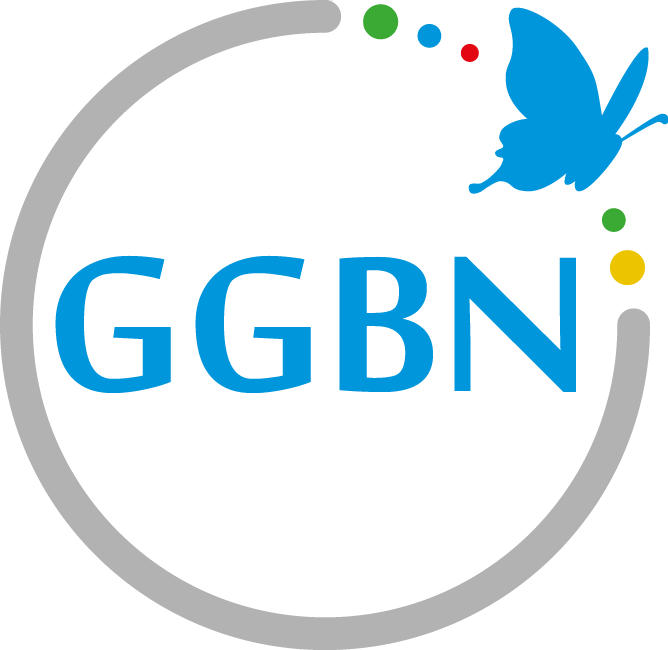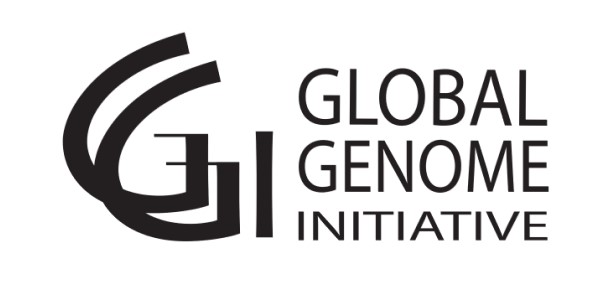Global Genome Biodiversity Network-Global Genome Initiative Awards Program
GGBN is happy to announce the 2018 GGBN-GGI Awards Program call for proposals. The program provides funding for projects that support the discoverability of new genetic collections through the Global Genome Biodiversity Network's Data Portal. The submission deadline for proposals this year is 1 May 2018. The proposal review committee will consider requests for up to 30,000 USD with clearly articulated budget justifications. All data from funded projects must be made available online on the GGBN Portal before 1 September 2019.
File:Example.jpg 2018 GGBN-GGI Awards Call for Proposals
File:Example.jpg 2018 GGBN-GGI Awards Program Application Form
Contents
- 1 The Global Genome Biodiversity Network-Global Genome Initiative Awards program 2017 Awardees
- 1.1 Institution: Biodiversity Research and Teaching Collections, Texas A&M
- 1.2 Institution: Centre for Biodiversity Genomics (CBG), University of Guelph
- 1.3 Institution: Centro de Ornitología y Biodiversidad (CORBIDI)
- 1.4 Institution: The Czech Academy of Sciences, Institute of Vertebrate Biology
- 1.5 Institution: Museum of Southwestern Biology
- 1.6 Institution: University of Johannesburg
- 2 GGBN/GGI Awards Program
The Global Genome Biodiversity Network-Global Genome Initiative Awards program 2017 Awardees
Institution: Biodiversity Research and Teaching Collections, Texas A&M
Country: USA
Title: Digitization of Vertebrate Tissue Collections at the Biodiversity Research and Teaching Collections
Number of samples added to GGBN: 35,000
Number of families provided to GGBN: 267
Number of genera provided to GGBN: 854
Abstract: Through time, each vertebrate division of Texas A&M University’s Biodiversity Research and Teaching Collections has grown to include genomic materials (i.e., tissues) associated with cataloged specimens. While we currently share our data via aggregators such as VertNET, and iDigBio, our databases often do not reflect if the specimen has an accompanying tissue. We estimate that we have 30,000 tissues associated with vouchers in our collection that need to matched to voucher data and digitized, and an additional 5,000 tissues not associated with a voucher but with appropriate locality data that could be added to the GGBN portal.
Institution: Centre for Biodiversity Genomics (CBG), University of Guelph
Country: Canada
Proposal Title: Increasing the visibility of genetic samples at the Centre for Biodiversity Genomics
Number of samples added to GGBN: 1,590,340
Number of families provided to GGBN: 1,238
Number of genera provided to GGBN: 6,332
Abstract: The Centre for Biodiversity Genomics (CBG) at the University of Guelph maintains a globally unique natural history collection and is spearheading a novel approach to biodiversity research within Canada and internationally. To maintain continued accessibility of this digitized collection, the CBG aims to liberate more data and derivatives of the specimens it holds. Through the GGI-GGBN Awards Program, it proposes to publish nearly 1.6 million specimen and DNA extract records on GGBN by May 2018.
Institution: Centro de Ornitología y Biodiversidad (CORBIDI)
Country: Peru
Title: Preserving treasures: road to save the Peruvian herpetofauna genome
Number of samples added to GGBN: 6,200
Number of families provided to GGBN: 36
Number of genera provided to GGBN: 140
Abstract: With only nine years of creation and more than 17000 specimens, between amphibians and reptiles, the herpetological collection of CORBIDI is one of the most important collections in Peru. However, as the collection became larger, so the expenses related to its maintenance, which we have not been able to cover. Consequently, our genome collection still lacks proper equipment and software for its maintenance and managing (e.g. high quality equipment, databasing, on-line storage, and curatorship). We are confident that with the current importance of molecular systematics and genomic research for biodiversity conservation, our institution will be able to get the necessary funds to improve our genome and specimens collections.
Institution: The Czech Academy of Sciences, Institute of Vertebrate Biology
Country: Czech Republic
Title: African and Central European Vertebrates: Discoverability of Genomic Samples Located at the Institute of Vertebrate Biology, Czech Republic
Number of samples added to GGBN: 8,000
Number of families provided to GGBN: 30
Number of genera provided to GGBN: 110
Abstract: The recently established Genetic Bank of the Institute of Vertebrate Biology currently presents 500 vertebrate genomic samples from Central Europe at GGBN Data Portal. However, further >9000 tissue samples collected mostly in East Africa (small mammals), Central Europe (fish, mammals), Russia and some Asian, Balkan and Middle East countries (small mammals) are to be processed and databased. We aim, therefore, to use already established data presentation pipeline to process and publish at GGBN Data Portal further at least 8000 samples from available collections. These collections include at least 133 species, 34 genera and three families not currently represented in GGBN.
Institution: Museum of Southwestern Biology
Country: United States
Title: Aligning Arctos with GGBN data standards
Number of samples added to GGBN: 750,000
Number of families provided to GGBN: 668
Number of genera provided to GGBN: 3,226
Abstract: Arctos (https://arctosdb.org/) is an online collection management information system that now serves data on over 3 million cataloged specimens from over 120 collections throughout North America. Arctos also is a community of museum professionals that collaborate on museum best practices and work together to continually improve Arctos data richness and functionality. Arctos has become a leader among museum data management systems supporting on-line museum data streaming. Modifications to Arctos are necessary for compliance with GGBN data standards, including ABS permitting information, and to export data in a GGBN-compatible format. We propose to program this functionality.
Institution: University of Johannesburg
Country: South Africa
Title: Data discovery from 10 years at the African Centre for DNA Barcoding (ACDB)
Number of samples added to GGBN: 7,452
Number of families provided to GGBN: 239
Number of genera provided to GGBN: 1,924
Abstract: The African Centre for DNA Barcoding (ACDB) was established in 2005 as part the International barcode of life project. The mitochondrial cytochrome c oxidase 1 gene (CO1) was adopted as the barcode for animals. Two plastid genes, rbcLa and matK were recommended to barcode terrestrial plants. The past decade, we at the ACDB have used these core DNA barcodes to generate a barcode library for southern Africa. To date, the ACDB has contributed more than 21 000 plant barcodes and to the Barcode of Life Database (BOLD).
GGBN/GGI Awards Program
Eligibility
Any institution with non-human genetic resources, to include both current and prospective members, who are pursuing or have achieved GGBN core membership are eligible to apply. Institutions with successful proposals who have not yet joined GGBN must − as a minimum − become an associate GGBN member by signing the GGBN MOU prior to the awarding of funds and become a core GGBN member upon project completion.
Technical Requirements
At the end of the project, for publishing data through GGBN, your collection should have: (i) a database to manage your specimens and samples according to GGBN requirements, (ii) a webserver to publish your data, and (iii) BioCASe or IPT to map your database to the GGBN Data Standard. Both BioCASe and IPT are open source software, one of them must be installed in order to make collections discoverable through GGBN. Voucher specimen data should be provided to GBIF in parallel. If your collection does not have a database for the management of DNA and tissue collections, GGBN provides an open source software that can be used (http://wiki.ggbn.org/ggbn/DNA_Module). Technical support is provided by GGBN. Please see GGBN’s IT requirements and mandatory and recommended fields for sharing data with GGBN for additional information.
Proposals
Budget requests will exclusively support the addition and publication of new genetic sample records on the GGBN Data Portal, e.g. contractual labor for short-term staff for processing and/or databasing genetic specimens, informatics support for preparing institutional databases for online discoverability, new servers required for online discoverability, and/or travel costs for visiting experts to facilitate sample processing and online discoverability. Proposed projects must support the discoverability of new collections through the GGBN Data Portal and support the goals of GGBN and GGI, including:
- increasing the visibility and discoverability of genetic samples (e.g. tissues and DNAs) through public release on GGBN data portal (http://www.ggbn.org/ggbn_portal/)
- Increasing the taxonomic (families, genera, species) representation of genetic samples through the GGBN Data Portal. Applicants may make use of the Gap Analysis Calculator when developing their proposals for funding in order to identify to what extent existing collections reflect familial or generic gaps in GGBN (see: http://www.globalgeno.me/)
Evaluation Criteria
- Complementarity: how do your institution’s holdings complement those already uploaded by GGBN members?
- Size, scope and quality of your collection: geographic scope, age of samples, genomic quality (if known), total number of samples, species, genera and families to be made discoverable through the GGBN Data Portal.
- Genomic Novelty: number of families, genera, and species to be made discoverable through the GGBN Data Portal not currently represented in GGBN.
- Adherence to GGBN best practice: to what degree does your collection meet GGBN best practices for data and collection management? I.e. does or can your institution meet GGBN’s technical requirements and implement the GGBN data standard, or follow GGBN’s guidance on Access and Benefit Sharing, as required for GGBN membership? Please be aware that information on the status and legality of permits for samples is tracked as part of the GGBN data standard.
- Efficiency: how much of this project can be accomplished per US dollar?
- Community: to what extent does this project contribute to the GGBN community?
- Timeline and milestones for completion.
Proposal Format
The body of the proposal should be no more than three single-spaced pages (with a 1,5 cm margin on all sides) and address complementarity to existing GGBN collections, size, scope and quality of collection, taxonomic novelty, adherence to GGBN best practice, efficiency, community and timeline. Applications that do not conform to the guidelines will be rejected.
Selection and Notification
All proposals will be evaluated by a committee composed of GGBN members. Please contact Katie Barker, GGBN and GGI Program Manager, (barkerk@si.edu) with any questions regarding the scope, ranking criteria, or clarifications for this proposal call.
Submission
Submit the proposal as a single PDF to GGI@si.edu with the required contents in the following order: Application Form, Proposal text, CVs of Principal Investigators (PI) and CO-PIs, or institutional contacts. A short email (sent to GGI@si.edu) is also requested from your director indicating the PI’s or primary contact’s name, project title, and approval of the submission of the proposal.
Selection and Notification
Proposal requests will be peer-reviewed by a committee selected by the GGBN Executive Committee. After proposal evaluation, institutions of selected proposals should expect to meet with committee members to discuss logistics and to answer questions. Please contact Katie Barker (barkerk@si.edu) for questions regarding project scope and evaluation criteria.

